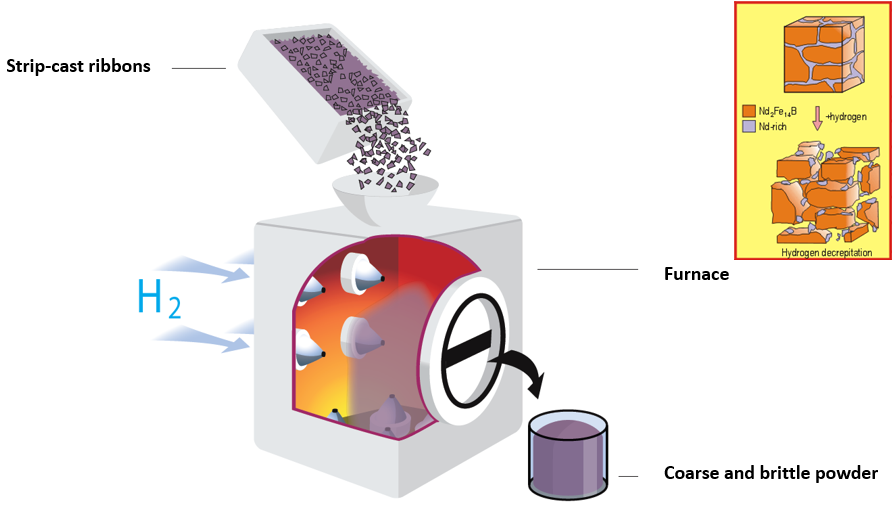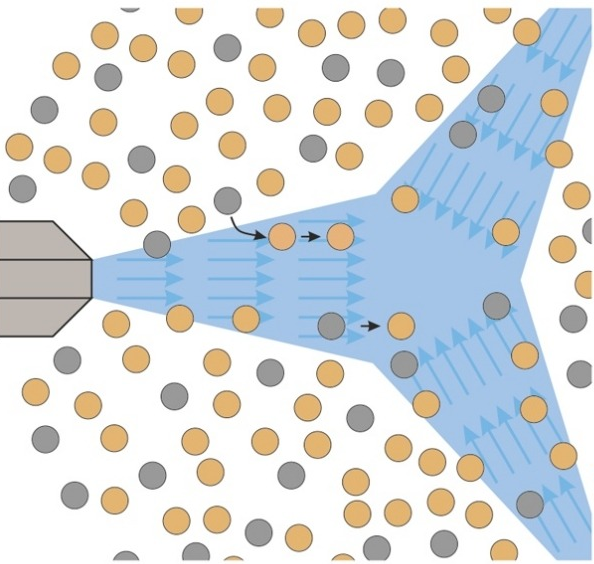Hydrogen decrepitation is used to increase brittleness of NdFeB. During the process, the hydrogen reacts with Nd in Nd-rich phase which leads to a volume increase when forming NdH3. This provokes the formation of cracks in the material, allowing to directly perform jet milling after hydrogenation without any additional crushing step (Figure 1).

Figure 1 : Hydrogen decrepitation
Enbrittled ribbons are consecutively reduced to smaller particle size with the jet mill process. Decrepitated ribbons are fed into a chamber with opposite gas jets designed to create a fluidized bed and to crush the particle flows against each other, therefore breaking the material into smaller pieces (Figure 2). The processing gaz is nitrogen in order to avoid owygen contamination of the highly reactive NdFeB powder.

Figure 2 : Jet milling
However, given the special microstructure of the strip-cast ribbons, this typically yields 5µm sized particles, which is adapted for the standard sintering route, but not for the additive manufacturing route, where the mean particle size has to rather be in the 30-40µm range.
For this reason, special effort has been made within the 3DREMAG project to transform the ribbons in such a way that the proper particle size is promoted, and the amount of fine particles is decreased, in order to obtain an as narrow as possible granulometric distribution.